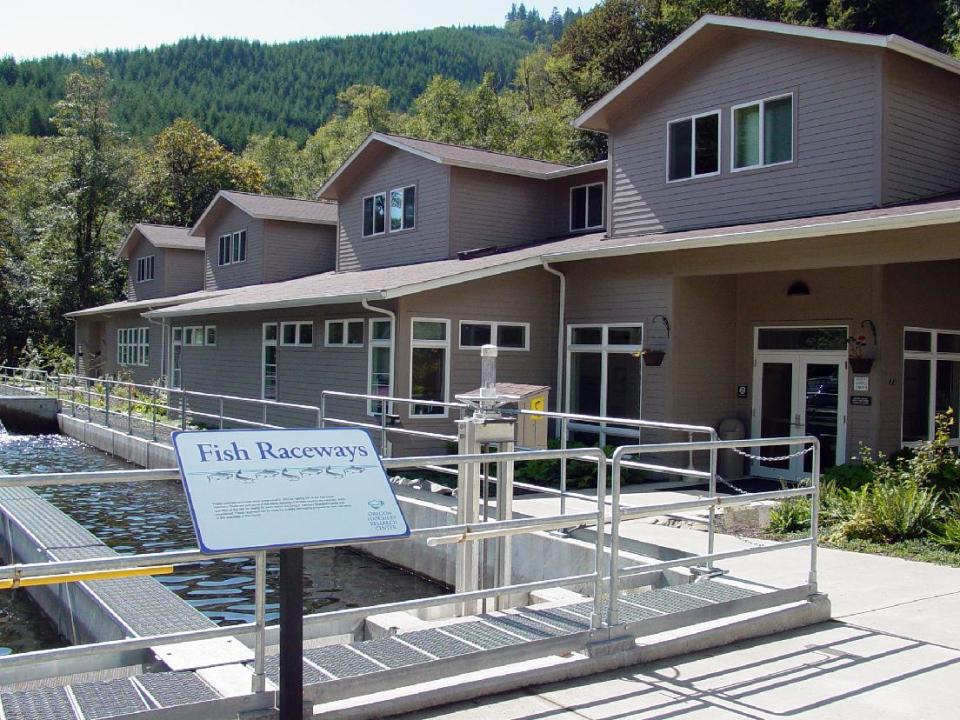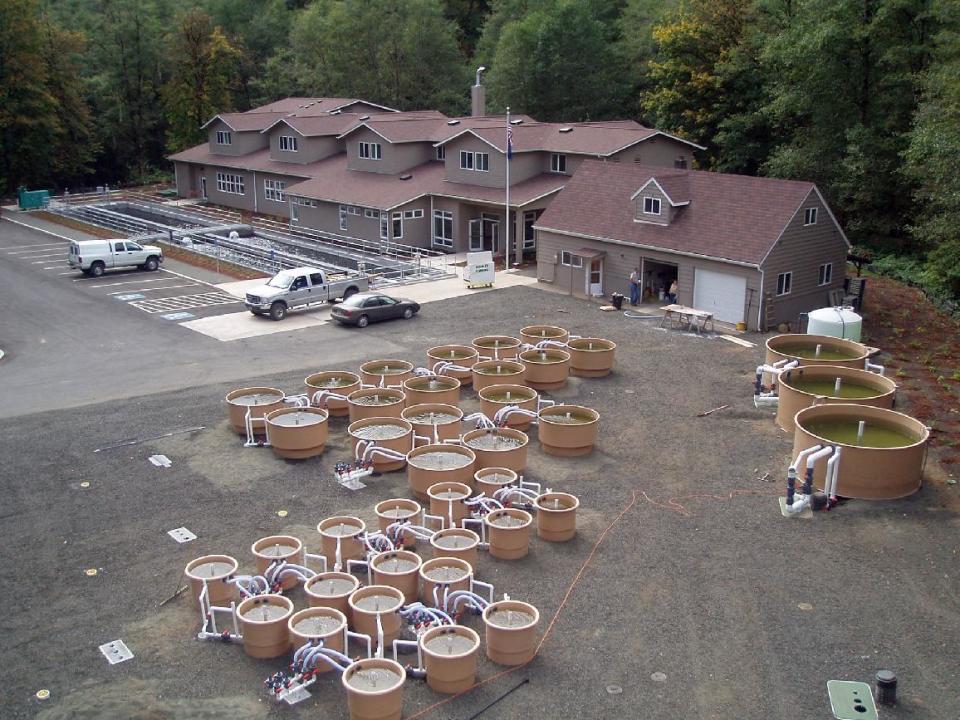Scientists want to breed fish to be better biters
In a lifetime of fishing for winter steelhead on Oregon's Alsea River, Stan Steele has seen it get harder and harder to hook into hatchery-bred fish. Instead, he has found he is more likely to hook the wild variety, whose numbers have declined.
A growing body of evidence is showing that Steele's experience is not some fish story, but the result of natural selection. Wild fish, which generally must be released unharmed, retain the aggression that will land them on the end of a hook better than hatchery fish.
Prodded by fishermen, the Oregon Hatchery Research Center has agreed to see if it can breed the bite back into hatchery steelhead.
Results won't be known for at least four years, but one thing is certain: It makes no sense for the state to spend $25 million a year to produce fish for fishermen to catch, if those fish won't bite.
"It's an exciting idea for us," said David Noakes, a professor of fisheries at Oregon State University and senior scientist at the research center. "Depending on what the answer is, we might be changing a lot of things about raising hatchery fish and stocking hatchery fish."
Hatcheries have been taking the place of Mother Nature to produce salmon and steelhead in the West for more than 120 years. They are supposed to make up for overfishing and habitat lost to dams, logging, mining, agriculture and urban development.
To distinguish them from wild fish, hatchery fish have been marked since the 1990s by clipping a fleshy knob at the base of the tail called the adipose fin. Hatchery fish make up the vast majority of salmon and steelhead returning to rivers, but not always the majority of those caught.
As scientific evidence has grown that hatchery fish are less likely to survive in the wild, and even contribute to declines of wild fish, many hatcheries have been mixing in wild fish to improve the gene pool.
Ryan Couture, the research center's director, said this would be their first attempt to breed a better biter.
So few steelhead returned to the Alsea this year that volunteer anglers did not turn in the 30 live wild fish needed to start the experiment, he said. They'll try again next year. It takes a year to raise the fish to be old enough to release, then two more years to return as adults.
There is evidence that when it comes to biting, a fish is not just a fish.
A 30-year study published in Transactions of the American Fisheries Society in 2009 on the effects of fishing on black bass in an Illinois lake showed that removing the aggressive fish that bite while defending their nests during spawning season produces a population less likely to bite.
In short, the tendency to bite can be inherited, said David Philipp, the study's lead author and principal scientist at the University of Illinois' Illinois Natural History Survey.
"As you fish a population, you tend to catch the most aggressive ones. Often times they are removed from the population. As a result, the population becomes less vulnerable to angling because it is less and less aggressive," Philipp said.
Just what makes a steelhead bite is something anglers can talk about for hours.
A rainbow trout that goes to the ocean to grow up, steelhead do not feed when they return to their native river to spawn. But they will still bite a clump of roe, a ball of yarn, a worm, a fly, or a lure wiggling in their face. Color seems to make a difference. So does size and movement.
Surveys of Deschutes River anglers since 1977 consistently show that wild fish account for the bulk of fish caught, even as their numbers have dwindled. In 2013, nearly six wild fish were caught for every hatchery fish, while hatchery fish outnumbered wild fish nearly three to one.
On the Alsea, the first year of a three-year creel survey found hatchery fish bred from wild parents were caught by fishermen three times more often than those bred from the hatchery's longstanding stock.
The biter experiment goes a step further, breeding fish exclusively from wild parents caught by fishermen, and comparing them to non-biters that return to the hatchery.
A retired state police fish and game officer and fishing guide, Steele has been the biggest contributor of wild fish to the experiment. As overall steelhead returns to the Alsea have declined, the proportion of wild to hatchery he catches has reached three to one.
He hopes breeding better biters will ultimately mean fewer hatchery fish overall to compete with wild fish.
"It doesn't mean you have to put more hatchery fish in," he said. "It means the fish you are putting in are contributing more to what they were designed to do in the first place. That's just good stuff."
---
Follow Jeff Barnard at https://twitter.com/JeffBarnardAP



